方案详情文
智能文字提取功能测试中
Fluoride inDrinkingVWater Calibration and Analysis 1. Allow all the standards and the samples to attain room temperature for precise measurements since themeasurement is temperature sensitive. 2.Calibrate the meter using the 1 ppm (mg/L) followed by the 10 ppm (mg/L) standard, stirring thestandards at a gentle and uniform rate. 3. Place the electrode, and stirrer into the beaker with the 1 ppm(mg/L) standard such that the electrodetip is fully immersed in the solution. The stirrer should be positioned slightly below the tip of theelectrode. Press the STIRRER key on the meter to turn the stirrer on. Press the CALIBRATE key. 4.Wait for a stable reading (1-2 minutes). Enter the standard value of“1.0”using the UP and DOWNarrow keys and the DECIMAL/DIGIT key. 5. Press the CALIBRATE key to accept 1.0 ppm (mg/L) standard and press the STIRRER key to turnthe stirrer off. 6.Rinse electrode, and stirrer thoroughly with deionized water. Gently remove excess solution from theouter sleeve of the electrode by dabbing with a clean paper tissue. Do not wipe or rub the sensingelement of the electrode. 7. Place the probes and stirrer into the beaker with the 10 ppm F-standard with the electrode tip fullyimmersed in the solution. The stirrer should be positioned slightly below the tip of the electrode.Press the STIRRER key on the meter to turn the stirrer on. 8.Wait for a stable reading (1-2 minutes). Enter the standard value of“10"using the UP and DOWNarrow keys and the DECIMAL/DIGIT key. 9.Press the MEASURE key to accept 10 ppm (mg/L) standard and to move to the measure mode of themeter. Press the STIRRER key to turn the stirrer off. 10. Rinse electrode, and stirrer thoroughly with deionized water. Gently remove excess solution from theouter sleeve of the electrode by dabbing with a clean paper tissue. Do not wipe or rub the sensingelement of the electrode. 11. Place the probe and stirrer in a prepared sample with the electrode tip fully immersed in the solution.Press the MEASURE key on the meter; the stirrer will turn on. The ISE:mg/L icon will flash as themeasurement is being made. The ISE:mg/L icon will become solid and the display value will freezewhen a stable reading is achieved. This value is logged and printed automatically and the stirrer turnsoff automatically. 12. Repeat steps 10 and 11 for additional samples. Upon completion of samples, rinse electrode withdeionized water and store the electrode according to instructions in the Electrode Storage section ofthis method note. Fluoride inDrinking Water Introduction The direct concentration fluoride method using an ion selective electrode is the most popular laboratorymethod for the measurement of fluoride. The SPADNS (colorimetry based) method is also used but theISE method is chosen more often due to the increased accuracy and precision of its results. This procedureimproves laboratory productivity because it provides quick, uncomplicated determinations, and eliminatesthe interferences often associated with colorimetric methods. The Orion buffer solution removes commoninterferences due to the presence of polyvalent cations at parts per million levels. Recommended Equipment Cat. No. ISE Application Package (includes all items with a Cat. No.) 1010103 1. 4-Star benchtop pH/ISE meter 1115000 2. Orion ionplus" fluoride electrode 9609BNWP 3. Orion benchtop stirrer (or magnetic stir plate and bar) 096019 4. Orion benchtop electrode stand 1110001 55.0 mL beakers 6.50 mL graduated cylinder Required Solutions Cat. No 1. 1 ppm F with TISAB II 040906 2. 2 ppm F with TISAB II 040907 3. 10 ppm F with TISAB II 040908 4. Reference Filling Solution, Optimum Results"" A 900061 5. TISAB II 940909 6. Deionized water Calibration Standard Preparation 1. Using a graduated cylinder, transfer 25 mL of the 1 ppm (mg/L) standard into a beaker. 2. Using a graduated cylinder, transfer 25 mL of the 10 ppm (mg/L) standard into a beaker. Sample Preparation 1.Using a graduated cylinder, measure 25 mL of the sample into a beaker. Using a graduated cylinderadd 25 mL ofTISAB II (940909) to the same beaker. 2. Repeat this procedure for additional measurements. Fluoride inDrinking Water Results Five aliquots of drinking water were collected from a faucet and measured for fluoride. The data in the tablebelow is representative of the results expected for fluoride in drinking water. Dr u i n k i n g W a t e r ppm (mg/L) Fluoride Sample #1: 1.09 Sample #2: 1.10 Sample # 3: 1.11 Sample # 4: 1.11 Sample #5: 1.11 Mean: 1.10 Standard Deviation: 0.01%CV: 0.81 Electrode Storage For brief storage periods between sample measurements, store the electrode in the 1 ppm (mg/L) fluoridestandard. The filling solution in the fluoride electrode should not be allowed to evaporate, causingcrystallization. For longer storage periods, refer to the electrode instruction manual. Fluoride electrodes, whoseresponse may become sluggish with time, can be restored to working order by brushing the sensing element onthe flat tip of the electrode with fluoride toothpaste and a soft brush. Equipment Setup Electrode Setup 1.Remove the rubber cap covering the electrode tip. 2.Fill the outer chamber with Optimum Results A filling solution. 3. Lift the filling solution bottle's spout to a vertical position. 4. Insert the spout into the filling hole in the outer sleeve of the electrode and add a small amount of fillingsolution to the chamber. Then tip the electrode to a vertical posi1tioon.. 5. Holding the electrode by the barrel with one hand, use the thumb to push down on the electrode cap,allowing a few drops of filling solution to drain wetting the inner cone. 6. Release the electrode cap allowing the electrode’s outer sleeve to return to its original position immediately.If the outer sleeve does not return to its original position immediately, check to see if the 0-ring is moistand repeat steps 4-6 until the outer sleeve has returned to its original position. Add more filling solutionuntil the amount of filling solution within the electrode body is level with the bottom edge of the electrodefilling hole. For initial meter setup, follow the steps on the Quick Reference Guide that is attached to the meter itself. TheQuick Start Guide included with each meter also contains a layout of the meter keypad for reference. Thewords in all capital letters such as POWER indicate a key on the meter, and words in quotations such as “Unit"indicate information on the meter display. 1. Connect the electrode to the meter. 2. . Connect the stirrer to the meter. 3. Press the POWER key on the meter to turn the meter on. 4. Note that the arrow on the left of the screen indicates the active line. If the top line is not active, press theLINE SELECTION key to change the selected line to the top line. 5. Press the SETUP key. Use the UP or DOWN keys to enter ISE setup. Press the LINE SELECTIONkey to select the bottom line. Press the UP or DOWN arrow keys to select“3”for “rES" which is anabbreviation for resolution or number of significant digits. Press the LINE SELECTION key toaccept setting. 6 Press the LINE SELECTION key to select the middle line, and press the DOWN arrow key to select“nL In"which is an abbreviation for non-linear blank correction. 7. Press the LINE SELECTION key to select the bottom line. Press UP or DOWN arrow keys to select“off”for“nL ln". Press the LINE SELECTION key to accept setting. 8 Press the LINE SELECTION key to select middle line, and press the DOWN arrow key to select "rAngwhich is an abbreviation for measurement range. 9. Press the LINE SELECTION key to select the bottom line. Press the UP or DOWN arrow keys to select“HigH” for"rAng”. Press the LINE SELECTION key to accept setting. 10. Press the LINE SELECTION key to select middle line, and press the DOWN arrow key to select “Unit". 11. Press the LINE SELECTION key to select the bottom line. Press the UP or DOWN arrow keys to select“mgL”for “Unit". Press the LINE SELECTION key to accept setting. 12. Press the MEASURE key to return to the measurement mode. If all steps were followed correctly the meter display will show three digits in the top line and “ISE: mg/Ltothe right of the top line. The meter and electrode are now ready for calibration. Note: The Orion Benchtop Stirrer must be turned on in General Instrument setup before analysis,0r101please see the Quickstart guide for instructions. ofof
关闭-
1/2
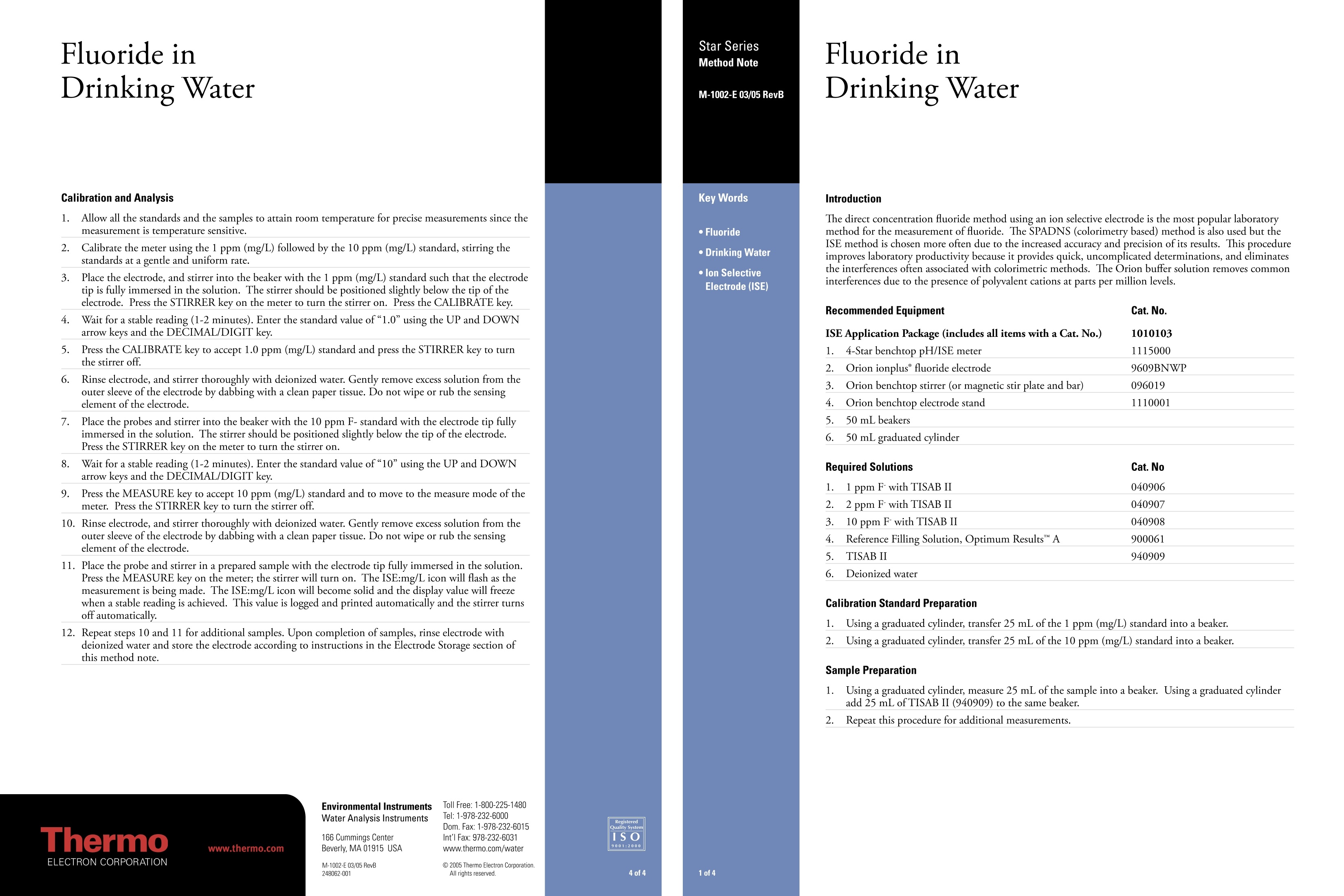
-
2/2
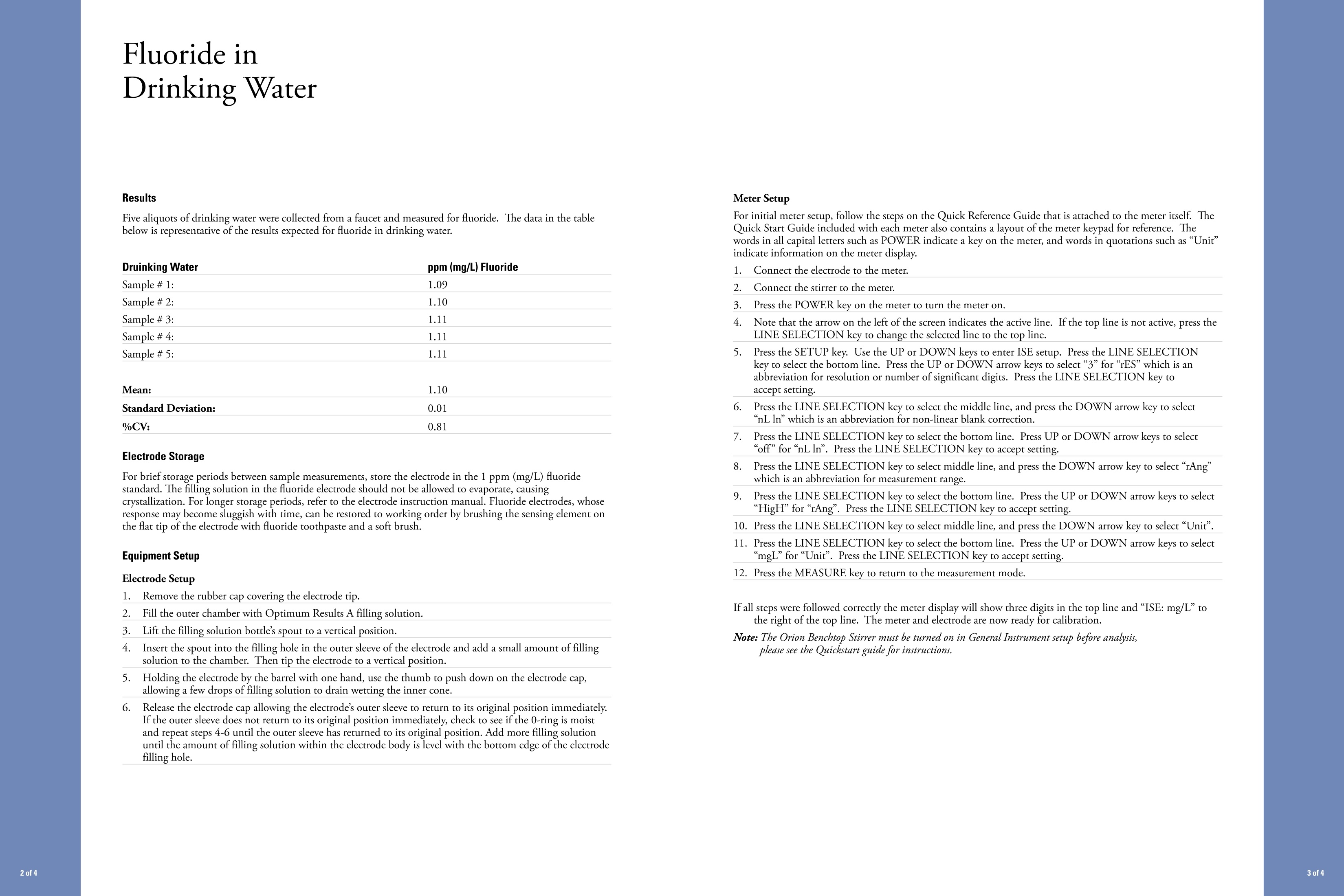
产品配置单
赛默飞中国实验室产品事业部为您提供《饮用水中无机阴离子检测方案 》,该方案主要用于饮用水中无机阴离子检测,参考标准《暂无》,《饮用水中无机阴离子检测方案 》用到的仪器有台式pH/ORP/ISE/溶解氧/电导率测量仪、Orion 4-Star台式(便携式)pH/离子浓度测量仪。
我要纠错
推荐专场
水质分析仪/多参数水质分析仪
更多相关方案


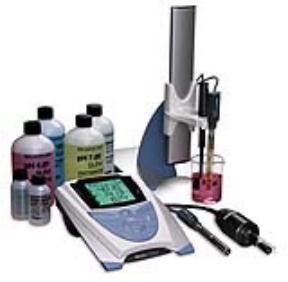
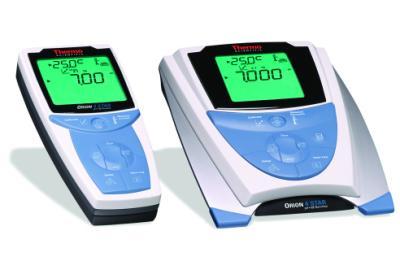
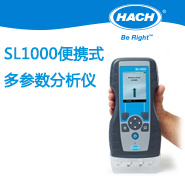
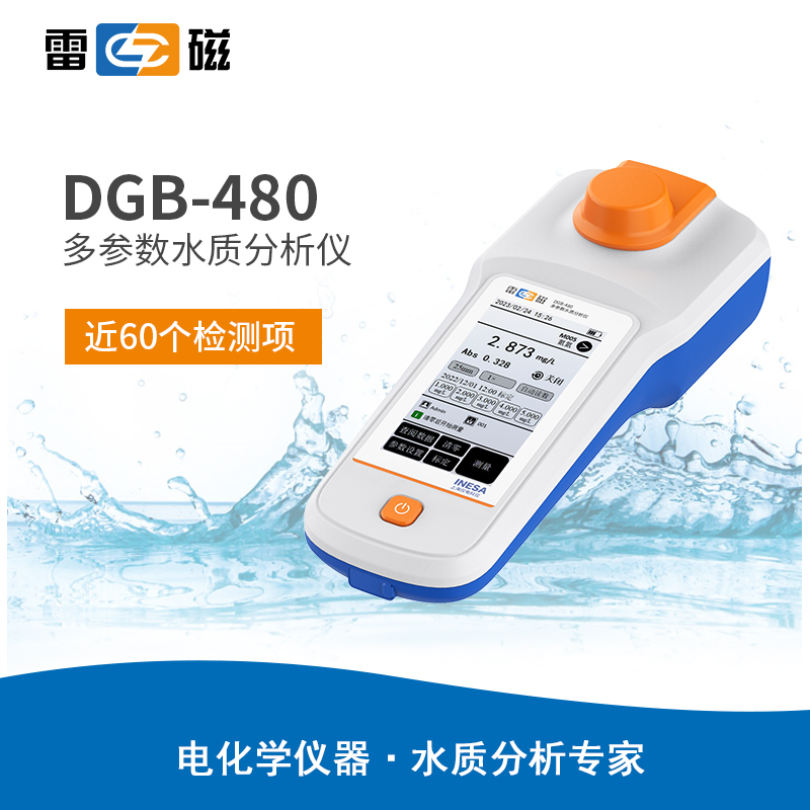
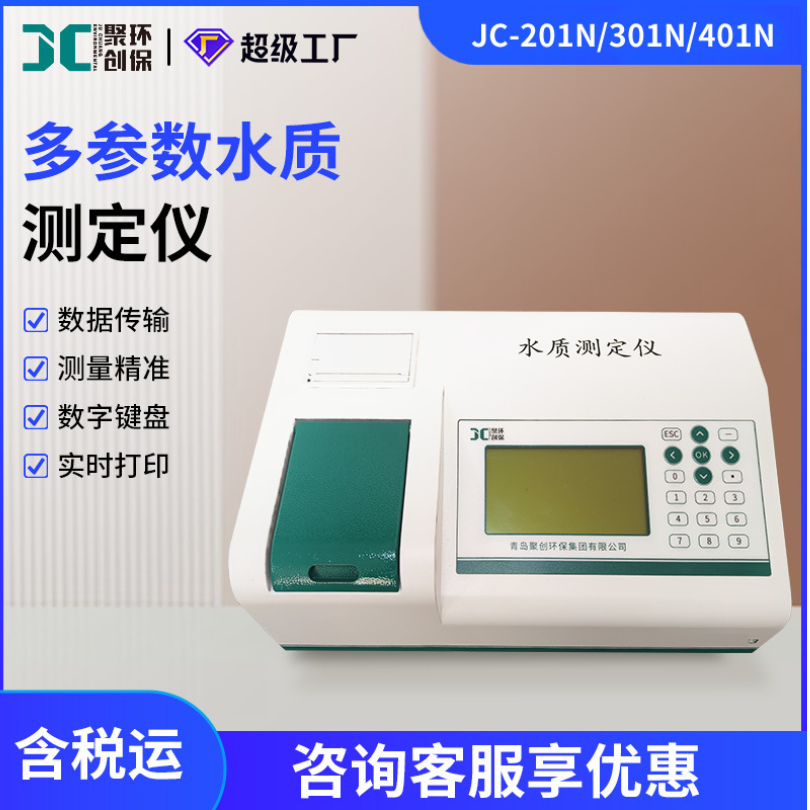
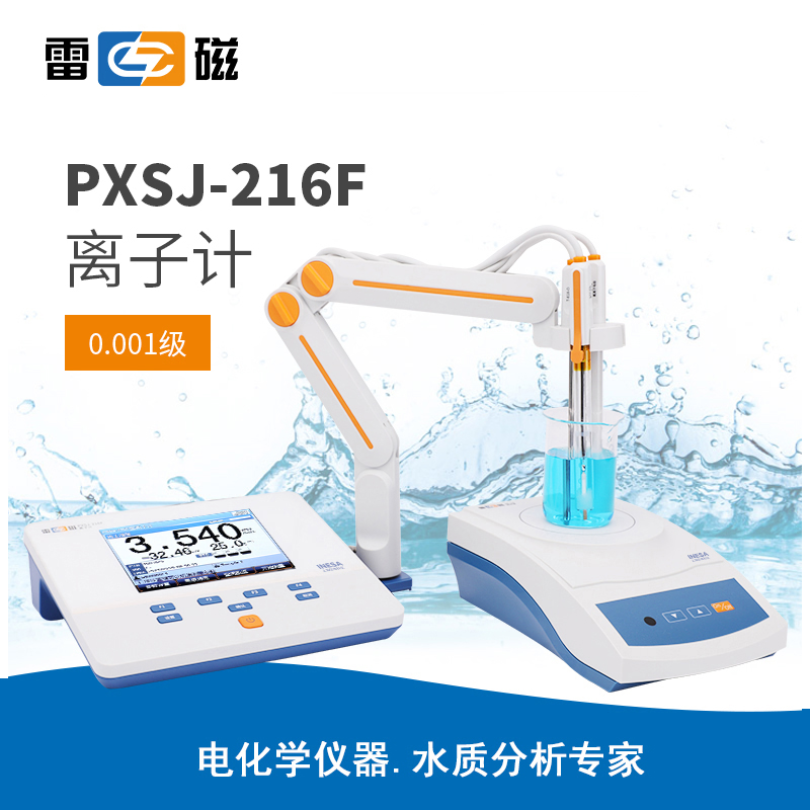
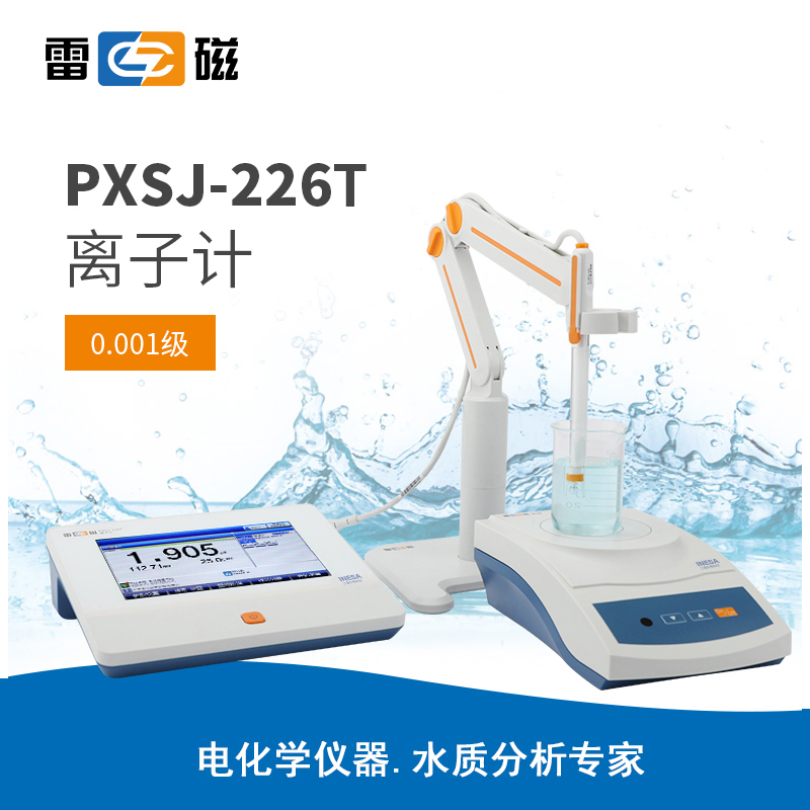
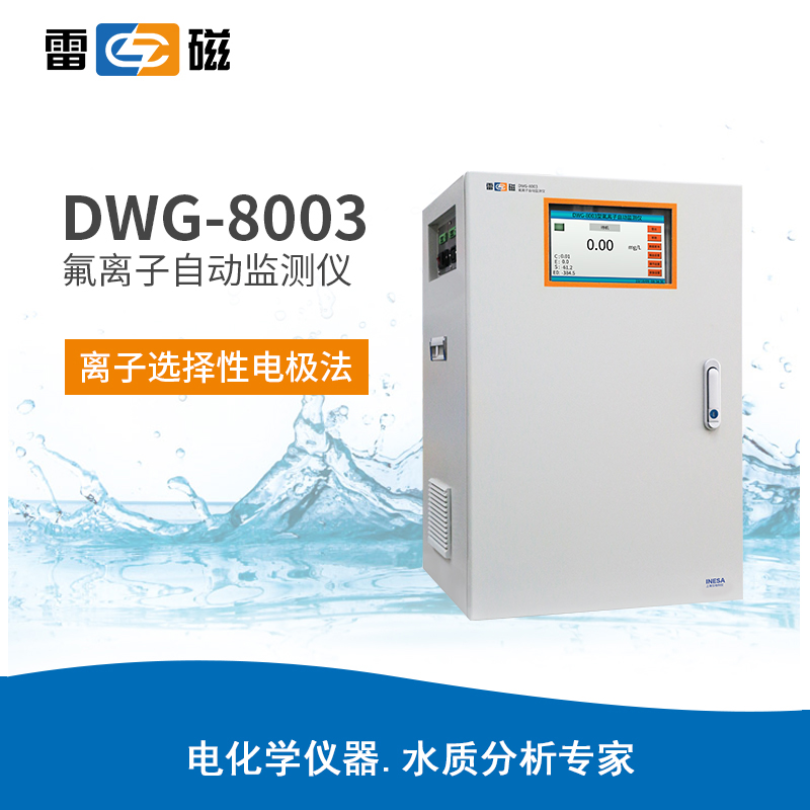
 咨询
咨询



